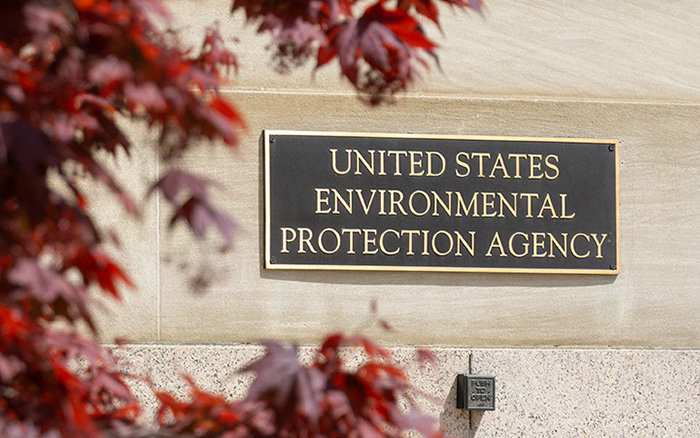EPA publishes protocol for IRIS ethylbenzene assessment
Chemicals
| By WALKER LIVINGSTON, ESQ

The Environmental Protection Agency (EPA) has published a protocol under the IRIS program for assessing ethylbenzene, explaining the agency’s rationale for conducting a risk assessment for the substance in addition to elucidating screening criteria and other pieces of the planned assessment. The document is now open for public comment until March 20, 2023.
Regulatory background
- IRIS, or the Integrated Risk Information System, identifies and characterizes the health hazards of specific chemicals found in the environment. IRIS as a program is located within the Environmental Protection Agency’s (EPA) Center for Public Health and Environmental Assessment (CPHEA) in the Office of Research and Development (ORD). IRIS is intentionally placed in ORD to allow it to develop impartial toxicity information independent of its use by EPA’s program and regional offices. The IRIS program was created by the EPA in 1985 to provide an internal database of human health assessments that the agency could use across its multiple programs for chemicals found in the environment.
- IRIS assessments provide two toxicity values based on exposure to certain chemicals, reference concentrations (RfC) and reference doses (RfD). RfCs are estimates of a continuous inhalation exposure to a chemical by the general population that will likely not lead to harmful effects during a lifetime. RfDs are estimates of daily oral exposure to a chemical to the general population that is likely to not lead to harmful effects over the course of a lifetime. Inhalation unit risk (IUR) is an estimate of the increased cancer risk from inhalation exposure to a concentration of 1 µg/m3 over a lifetime.
- IRIS assessments compose the first two steps of the EPA’s four-step risk analysis of chemicals. Under the risk assessment that the EPA conducts, IRIS assessments encompass the hazard identification and the dose-response assessment steps. In total, the EPA has released 572 final IRIS assessments, available on this page.
- Ethylbenzene (CAS RN 100-41-4) is a colorless flammable liquid, found naturally in crude petroleum as well as produced via manmade processes. It is created by alkylating benzene with ethyl, and can be found in gasoline, paint, varnishes, pesticides, and many other products. However, ethylbenzene is most commonly used in producing styrene, a precursor to polystyrene.
- Humans are exposed to ethylbenzene through contaminated air, water, and food, as well as through skin contact with contaminated soil and water. Ethylbenzene is a component of automobile exhaust, the most common form of exposure, but people are also often exposed to ethylbenzene through consumer products.
Protocol for the IRIS Assessment
- On February 17, 2023, the EPA announced the Protocol for the Ethylbenzene IRIS Assessment (note: clicking the link will automatically download a pdf file). The protocol describes how the assessment will be conducted and develop over the coming months and years. It details its plan, focusing on evaluating studies, extracting data from those studies, and synthesizing the evidence before integrating that evidence to finally use to derive toxicity levels.
- Although the EPA released a draft IRIS Assessment Plan in 2017, the agency determined there were several scientific issues that would require additional review and focus not covered by a 1991 IRIS Assessment of ethylbenzene. These issues include additional research into the pharmacokinetics of the chemical across different species, better understanding dose metrics, and neurotoxicity mechanisms.
- Throughout the protocol, the EPA keeps the focus wide, looking at the overall options and strategies to use in the future IRIS assessment. These include developing systematic evidence maps for identifying health effects for exposure to ethylbenzene and developing criteria for the future assessment based off those evidence maps. In addition, the agency noted that it would conduct evaluations of studies to reduce the risk of bias and sensitivity within the utilized epidemiological and toxicological studies for the future assessment.
Next steps
- The EPA is accepting input on the protocol until March 20, 2023. Comments may be submitted via the docket linked here, and Dahnish Shams of the Center for Public Health and Environmental Assessment is the contact for any related technical information.
- The EPA will continue to use and update the protocol throughout the IRIS assessment. The agency is seeking public comment on these protocol methods, meaning that insightful or useful comments may affect how the EPA plans out the next phases of the assessment.
Contains previous research by Walker Livingston.
To contact the author of this analysis, please email Walker Livingston.
To contact the editor of this analysis, please email Scott Stephens.
Key Documents and Dates
- Protocol for the Ethylbenzene IRIS Assessment (note: clicking the link will automatically download a pdf file)
- IRIS page for ethylbenzene